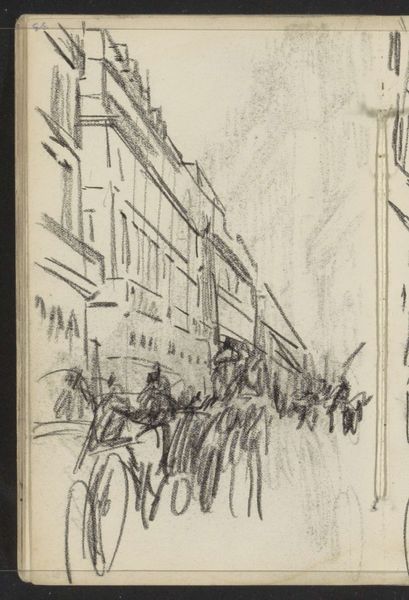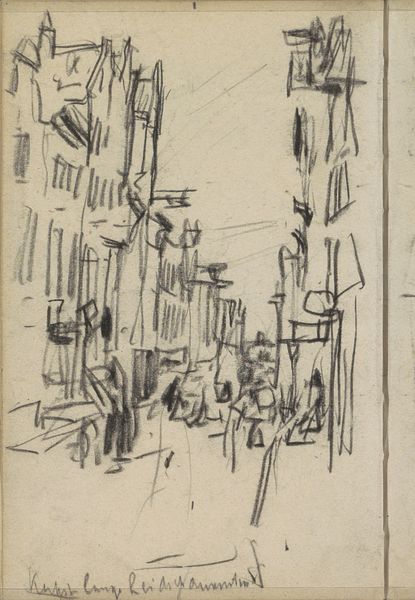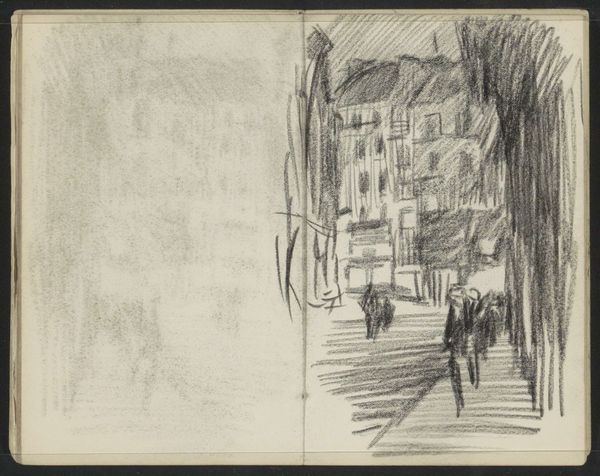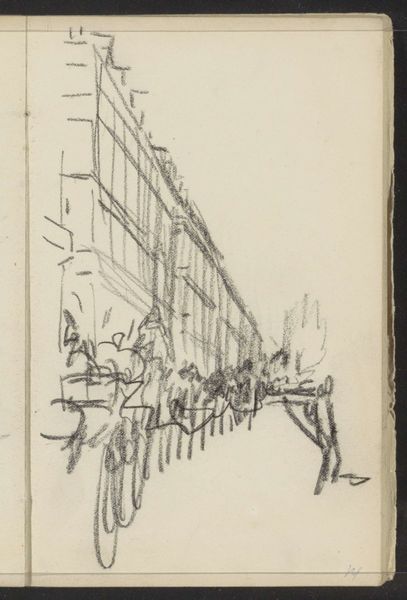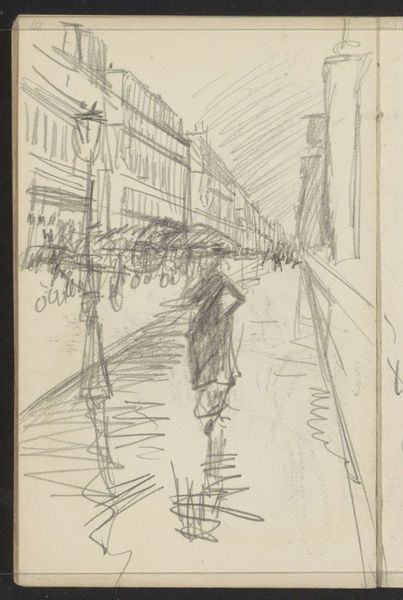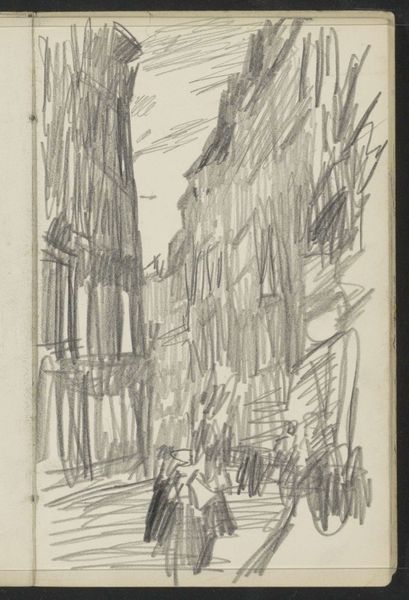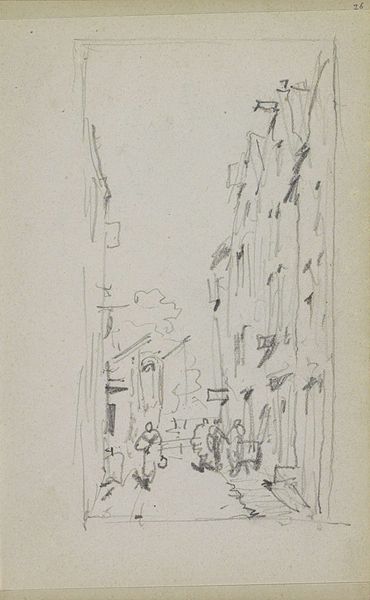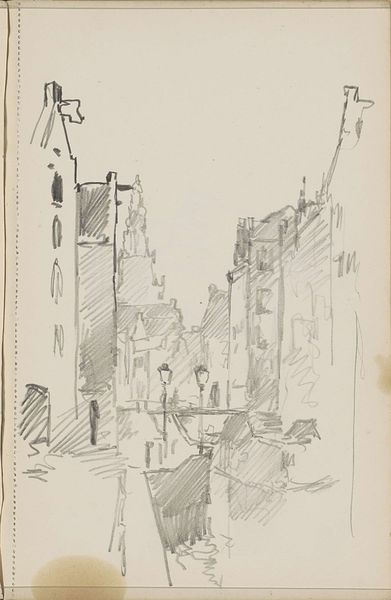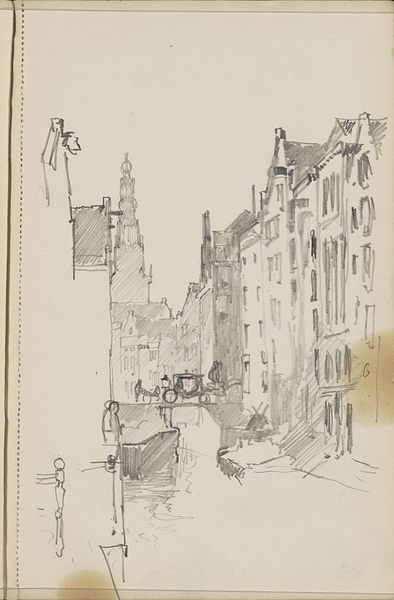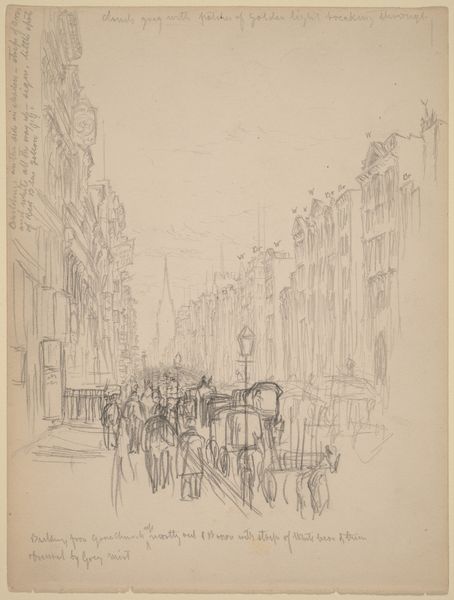
Copyright: Rijks Museum: Open Domain
Curator: This brisk sketch before us is entitled "Rijtuigen op straat in Parijs," which translates to "Carriages in the Street in Paris." Created with pen and ink on paper by Isaac Israels, likely sometime between 1887 and 1934, it's a study held at the Rijksmuseum. What are your immediate impressions? Editor: Energetic. It feels like a fleeting moment captured, a street scene observed and rendered quickly. The lack of detail almost amplifies the sense of bustling city life. There’s an emphasis on line—so many distinct strokes and scribbles working together. Curator: Indeed. Note the repetition of vertical lines in the buildings, contrasting with the more frenetic, looping marks representing the carriages and the figures on the street. The rhythmic nature of the strokes creates a sense of movement, a visual approximation of urban hustle. Do the forms communicate something to you? Editor: The carriages themselves are reduced to these swirling gestures. The looping strokes conjure ideas about transit and the circle of life but without enough refinement for particular references. And the anonymity is striking; no individual is distinguishable. Paris becomes a symbol of the collective. Curator: Anonymity certainly defines the urban experience and a growing feeling from this period—of being lost within the crowd. One might even see hints of the flâneur here, the detached observer, cataloging the everyday rhythms. There is, certainly, something here of the fleeting observation, the quick "impressions" that define this style. The contrast of light and shadow are almost nonexistent; do you think this influences the reading? Editor: Perhaps its universality is its enduring quality; the figures seem suspended in time as they proceed through the boulevards. One way that’s apparent, too, is by way of the near total absence of symbolic cues related to specific political events, persons or movements. Curator: A timeless snapshot, if you will, despite the dated technology presented within the image itself. So much is presented through just a few, efficient strokes of the pen! Thank you, these thoughts have been illuminating. Editor: The pleasure was all mine. Its openness makes way for individual encounters—every person might see their history.
Comments
No comments
Be the first to comment and join the conversation on the ultimate creative platform.
